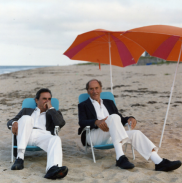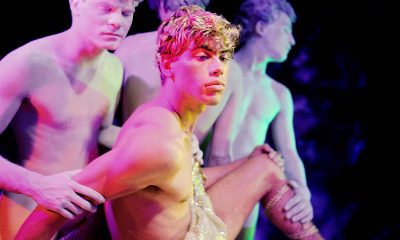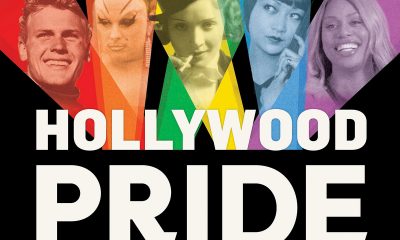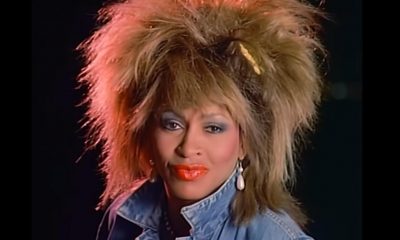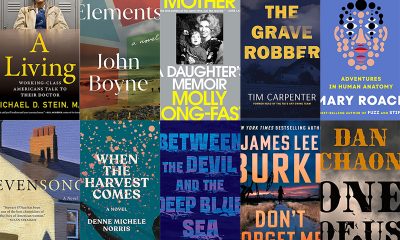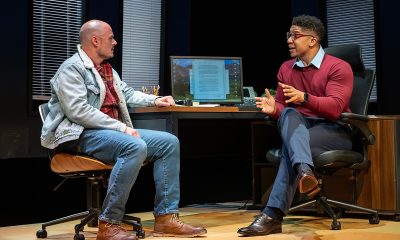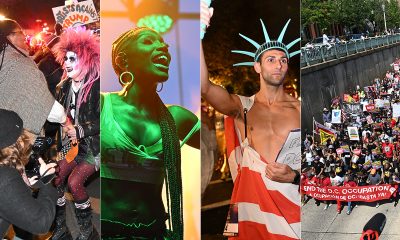Arts & Entertainment
From Broadway to Hollywood
‘Double Life’ memoir recounts 50-year love story of artist and TV mogul
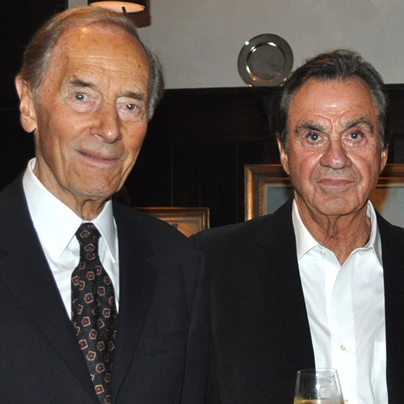
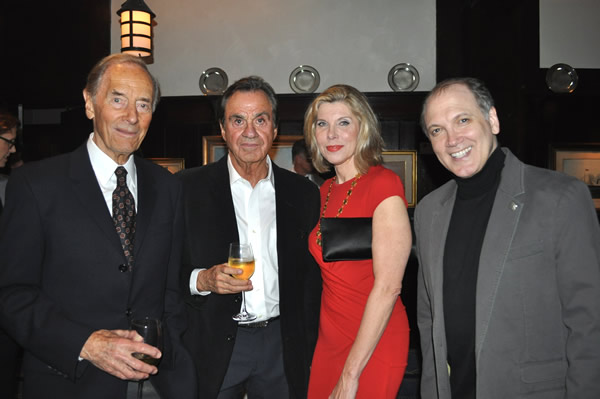
From left, Alan Shayne and Norman Sunshine with Christine Baranski and Charles Busch at a launch party for their book in November. They’ll be in Washington this week for a similar event. (Photo courtesy Scott Manning & Associates)
Careers in the arts are never easy, but for every Sinatra, Hepburn or Garland there are hundreds, perhaps thousands, of actors, singers and behind-the-scenes moguls and designers who manage long, successful careers in New York or Hollywood without becoming household names.
Alan Shayne and Norman Sunshine are two such figures. Shayne is a former actor-turned-casting agent-turned TV mogul who nurtured hit ‘70s shows like “Dukes of Hazzard” and “Alice” to the airwaves during his 10 years as president of Warner Brothers Television. Sunshine, his partner of 50 years, is a painter and sculptor who made ads for Blackglama Minks (“What becomes a legend most?”) and Danskins (“Danskins are not just for dancing”) famous between stints of having his own exhibitions and commercial projects. After decades of navigating the thick jungles and uphill battles of the art world and entertainment industry, one wonders their thoughts on the ways of those worlds: with tenacity, does the cream inevitably rise or have we missed geniuses along the way?
They say it’s gotten tougher to “make it” over time.
“I think the thing I’ve observed in the fine arts is the phenomenon of money coming into play more and more in which careers are measured by the amount of money that can be made off of it,” Sunshine says. “All these art fairs are really about money, the dealers and collectors being able to make money off of it. It’s different. I don’t know how one quite survives that … there’s a horrendous fickleness now on a scale we’ve not seen before.”
Shayne, who gave up acting because casting seemed more stable and practical, agrees.
“It’s a really tough road to hoe,” he says. “In my day, I could go to New York and live and rent a room for $5 a week and make it work. Now you can’t possibly do that. I don’t know how the young actors and young artists do it today. Yes, the Meryl Streeps and the Dustin Hoffmans and the Robert De Niros are going to succeed but I worry about some of the little people who are also very talented.”
In November, the two had their joint autobiography published by Magnus Books — “Double Life: a Love Story from Broadway to Hollywood.” They’ll be in Washington Monday for a private reception for the book.
And even though the book is drawing raves — Joan Rivers called it “beautifully written” and “filled with humor” and legendary critic Rex Reed called it a “riveting” book by “two extraordinary men” — Shayne and Sunshine, who worked on it for about three years, say getting it published was not easy.
“We got the most glowing rejection letters you could imagine from the leading publishing houses,” Shayne says.
He says it was worth the effort to get the book in print to show that long-term gay relationships are possible.
“We’d been terribly disturbed by the suicides,” Shayne says. “Time magazine did a story where they talked to young gays in their 20s who didn’t believe any [gay] relationship could last past 10 years. People have told us we’re a rather inspirational couple so we decided to tell our story.”
“There had always been this thinking that, ‘Oh God, it’s a terrible life,’” Sunshine says. “We wanted to kind of deal with that issue and let people know we’re not always in feathers or this and that. We’re like you. We have the same loves, desires and careers. We felt we had a responsibility to tell that story.”
And it is quite a story. With fun anecdotes of the famous paths with whom they’ve crossed — Lena Horne, Laurence Olivier, Marlon Brando, David Susskind, Helen Hayes, George Cukor, Katharine Hepburn, Norman Lear, Bette Davis, Rock Hudson and more make memorable appearances — the book is delightfully shameless in its name dropping.
Just as vivid, though, are lengthy passages where the two write evocatively of what it was like to be gay in the ‘50s and ‘60s, to what degree they were able to be out (if at all) and how their relationship evolved over the decades. Shorn of any Jackson-Paris-type false idealism — they make it clear it wasn’t always a bed of roses — their experiences come vividly to life.
“We felt we had to be totally honest for the book to work,” Shayne says. “We found out things about each other we didn’t know but we felt if we weren’t totally honest about it, what would be the point? Otherwise it would be so goody-goody you couldn’t stand it. But we got through it and that’s really the story of our relationship. We ended up supporting each other.”
“A lot of people have identified very strongly with the book,” Sunshine says. “It gives them insight into the time period and the history of the gay situation vis-à-vis us.”
During a lengthy phone chat from their home in Palm Beach, Fla., the two — on a joint call — happily elaborate on topics touched on in the book.
Though they still drink, it’s mostly just wine these days —they’ve traded in the Rob Roys they drank copiously for years for California chardonnay.
They attribute their long careers to their mutual abilities to adapt. Some opportunities came out of nowhere — like the Tiffany display that helped launch Sunshine’s impressive art career — while others were built piece by piece through painstaking work like the cards Shayne kept on each actor he saw so he’d have a bounty of suggestions to directors casting various projects.
Their various country houses — in Pennsylvania, Connecticut and more — have helped them grow together, they say.
“In the ‘50s, when you couldn’t really be openly gay, our homes became terribly important to us and we were happiest when we were there by ourselves,” Shayne says.
He also says the popular notion that CBS didn’t care about “Alice” spin-off “Flo,” an eponymous sitcom for Polly Holliday’s sassy character, isn’t true. It was not a victim, he says, of the network carelessly changing the show’s time slot repeatedly in those pre-VCR or TiVo days. Shayne says he worked hard to make “Flo” fly just as he’d done with “Alice” in its rocky first season but ultimately the audience wasn’t buying the character in a world outside Mel’s Diner.
But how did “Alice” succeed another five seasons without its most popular character while “Flo” failed?
“I love Polly and at the time, it seemed like a good idea to bring Diane (Ladd — who’d played Flo in the film) back (to ‘Alice’),” Shayne says. “We really had hoped ‘Flo’ would be a big success and believe me, we did everything. We changed writers, changed producers, nothing seemed to work, but God knows we tried. … the public kind of wanted her there saying, ‘Kiss my grits’ in the diner and she became really a different character when she had her own show. She wanted to be different … CBS was actually very cooperative.”
Ironically perhaps, Shayne and Sunshine say though they socialized several times with Cukor, the legendary “old Hollywood” director who was gay and famous for his parties, they never discussed their relationship or homosexuality with him.
“He knew we were a couple, he would invite us both to dinner, but it was always a mixed group. Sometimes Kate (Hepburn, who lived in Cukor’s guest house when she was on the West Coast) would stop by and say hello, but it was all very proper … I don’t think he ever mentioned the word gay to us,” Shayne says.
As for the changing times, they say it’s only in the last eight or 10 years that they’ve felt comfortable being fully out in all aspects of their lives. They wed in Massachusetts eight years ago initially for practical reasons. They were pleasantly shocked at how welcomed they were by the hotel staff where they stayed.
“AIDS really exploded the conversation on gay issues,” Sunshine says. “It was the instrument by which the whole gay thing came out as a national discussion.”
And what about the irony of Sunshine being the Emmy winner in the family despite Shayne’s long career in television (Sunshine won for titles he designed for a special in the mid-‘70s)?
“Can you hear me gnashing my teeth,” Shayne says.
a&e features
Queer highlights of the 2026 Critics Choice Awards: Aunt Gladys, that ‘Heated Rivalry’ shoutout and more
Amy Madigan’s win in the supporting actress category puts her in serious contention to win the Oscar for ‘Weapons’

From Chelsea Handler shouting out Heated Rivalry in her opening monologue to Amy Madigan proving that horror performances can (and should) be taken seriously, the Critics Choice Awards provided plenty of iconic moments for queer movie fans to celebrate on the long road to Oscar night.
Handler kicked off the ceremony by recapping the biggest moments in pop culture last year, from Wicked: For Good to Sinners. She also made room to joke about the surprise hit TV sensation on everyone’s minds: “Shoutout to Heated Rivalry. Everyone loves it! Gay men love it, women love it, straight men who say they aren’t gay but work out at Equinox love it!”
The back-to-back wins for Jacob Elordi in Frankenstein and Amy Madigan in Weapons are notable, given the horror bias that awards voters typically have. Aunt Gladys instantly became a pop culture phenomenon within the LGBTQ+ community when Zach Cregger’s hit horror comedy released in August, but the thought that Madigan could be a serious awards contender for such a fun, out-there performance seemed improbable to most months ago. Now, considering the sheer amount of critics’ attention she’s received over the past month, there’s no denying she’s in the running for the Oscar.
“I really wasn’t expecting all of this because I thought people would like the movie, and I thought people would dig Gladys, but you love Gladys! I mean, it’s crazy,” Madigan said during her acceptance speech. “I get [sent] makeup tutorials and paintings. I even got one weird thing about how she’s a sex icon also, which I didn’t go too deep into that one.”
Over on the TV side, Rhea Seehorn won in the incredibly competitive best actress in a drama series category for her acclaimed performance as Carol in Pluribus, beating out the likes of Emmy winner Britt Lower for Severance, Carrie Coon for The White Lotus, and Bella Ramsey for The Last of Us. Pluribus, which was created by Breaking Bad’s showrunner Vince Gilligan, has been celebrated by audiences for its rich exploration of queer trauma and conversion therapy.
Jean Smart was Hack’s only win of the night, as Hannah Einbinder couldn’t repeat her Emmy victory in the supporting actress in a comedy series category against Janelle James, who nabbed a trophy for Abbott Elementary. Hacks lost the best comedy series award to The Studio, as it did at the Emmys in September. And in the limited series category, Erin Doherty repeated her Emmy success in supporting actress, joining in yet another Adolescence awards sweep.
As Oscar fans speculate on what these Critics Choice wins mean for future ceremonies, we have next week’s Golden Globes ceremony to look forward to on Jan. 11.
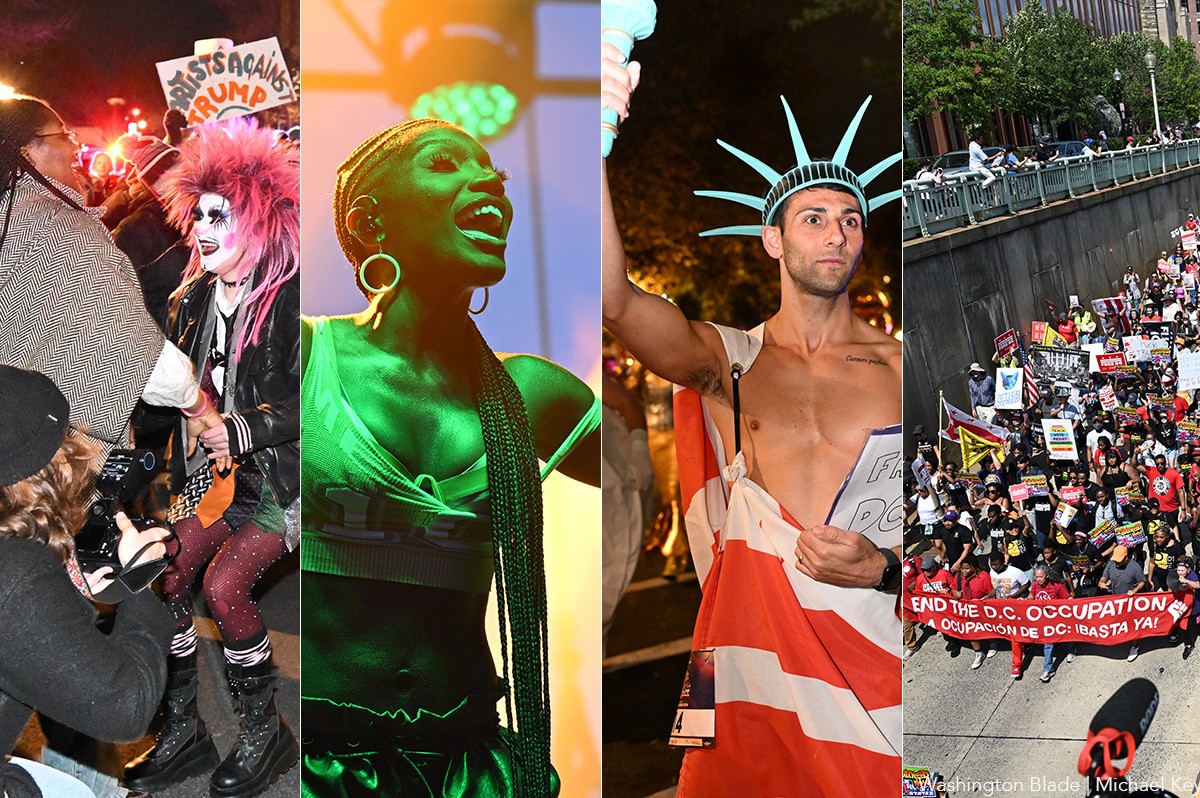
(Washington Blade photos by Michael Key)
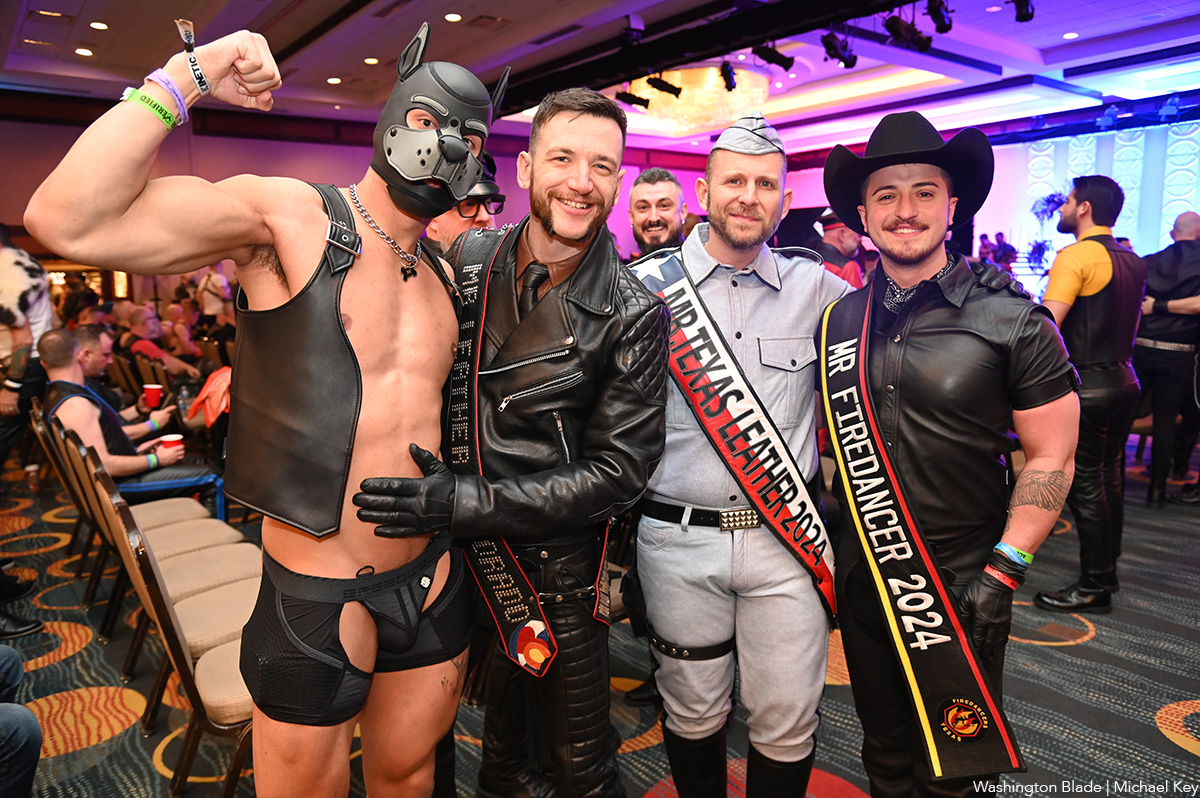
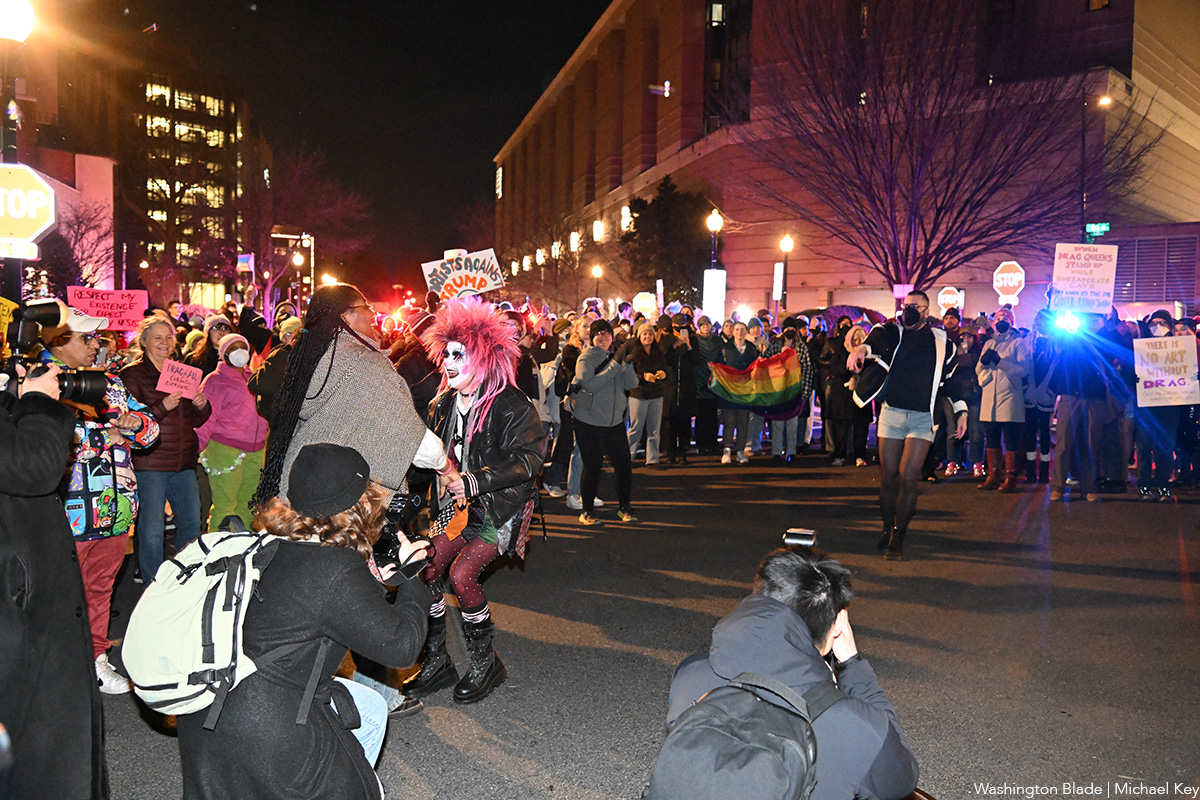
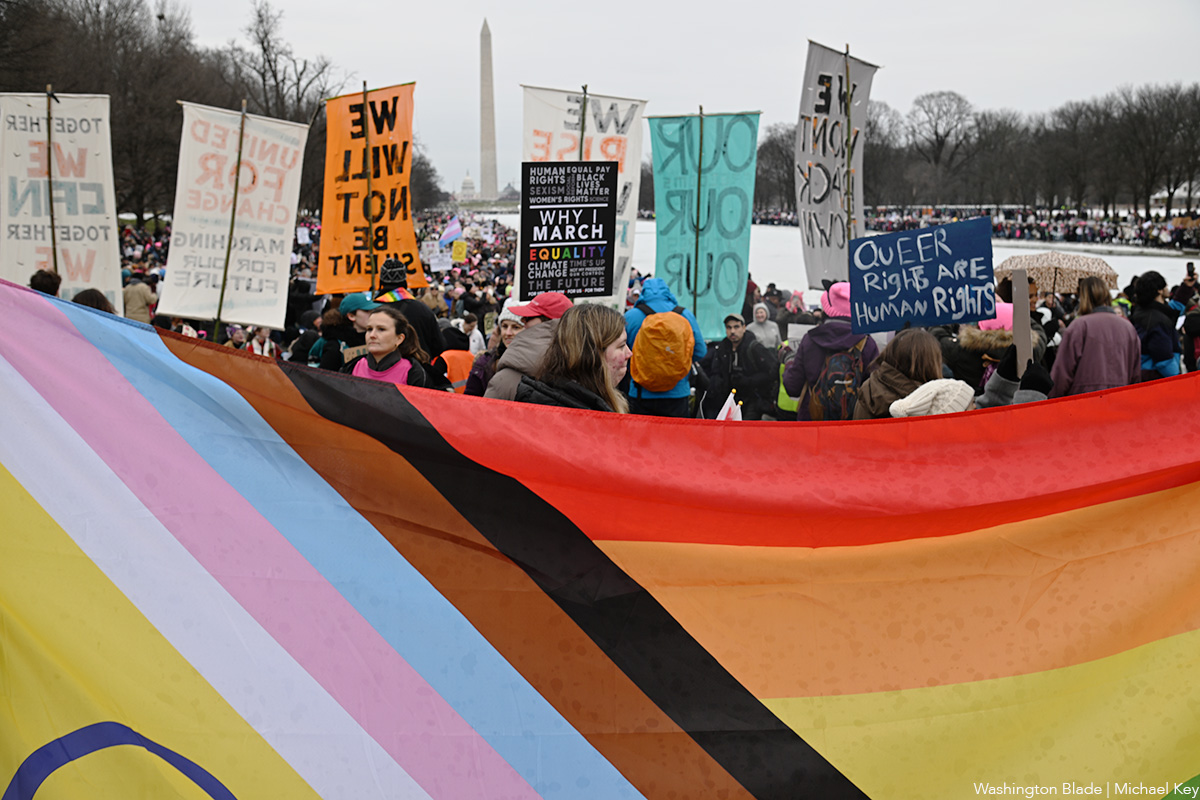
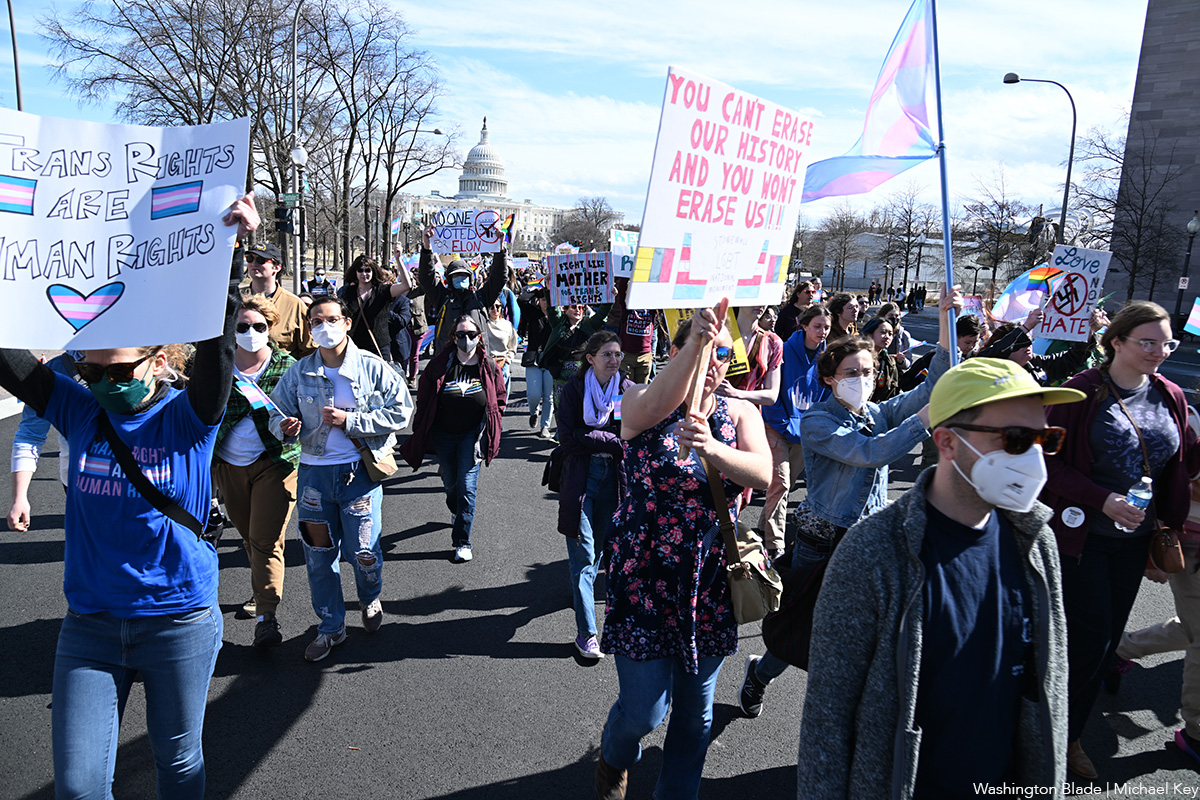
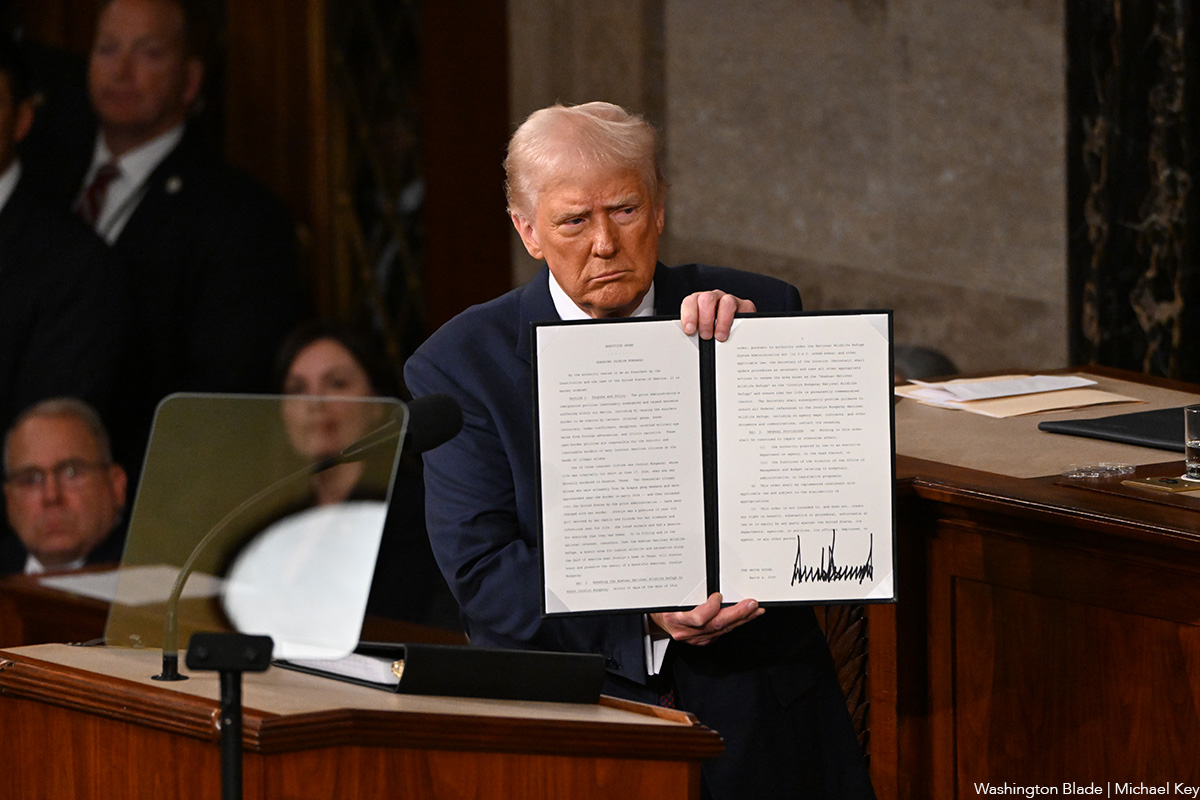
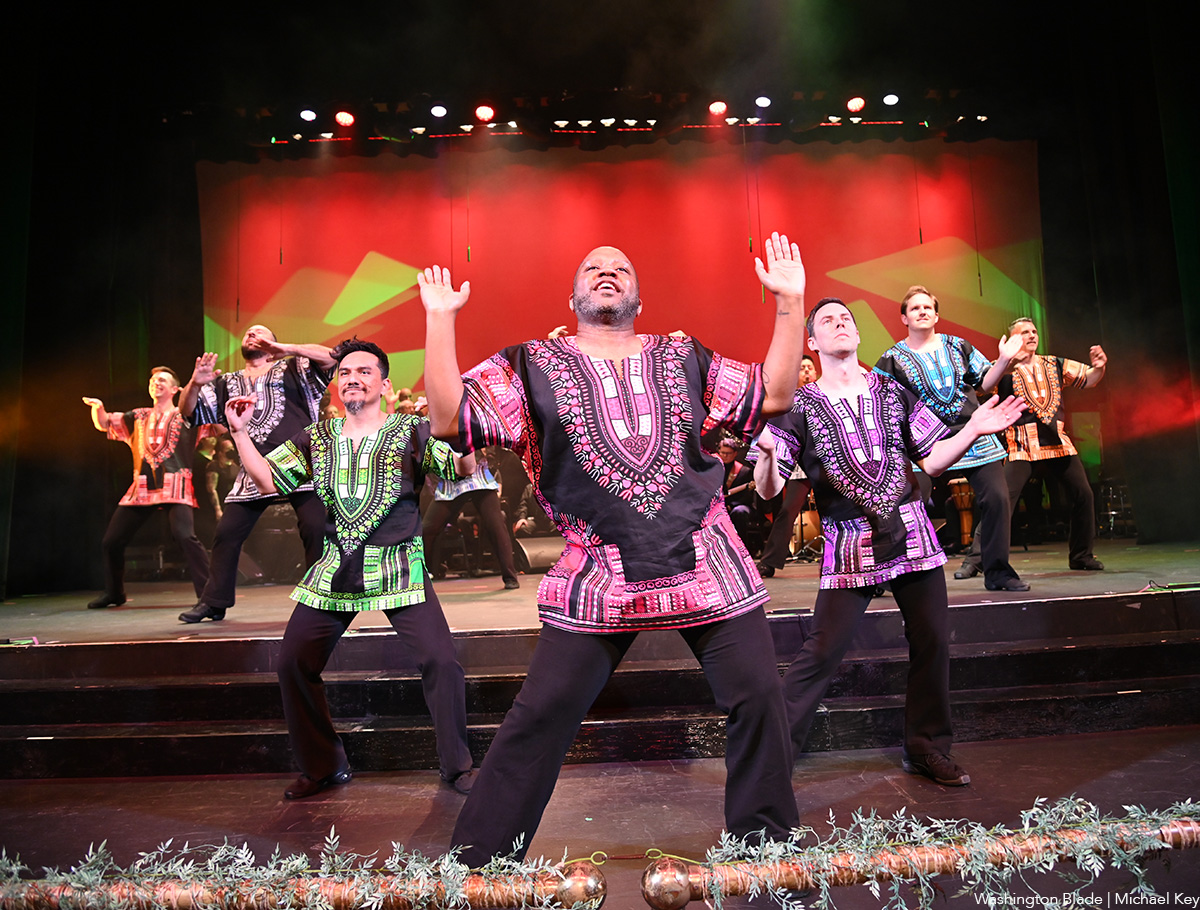
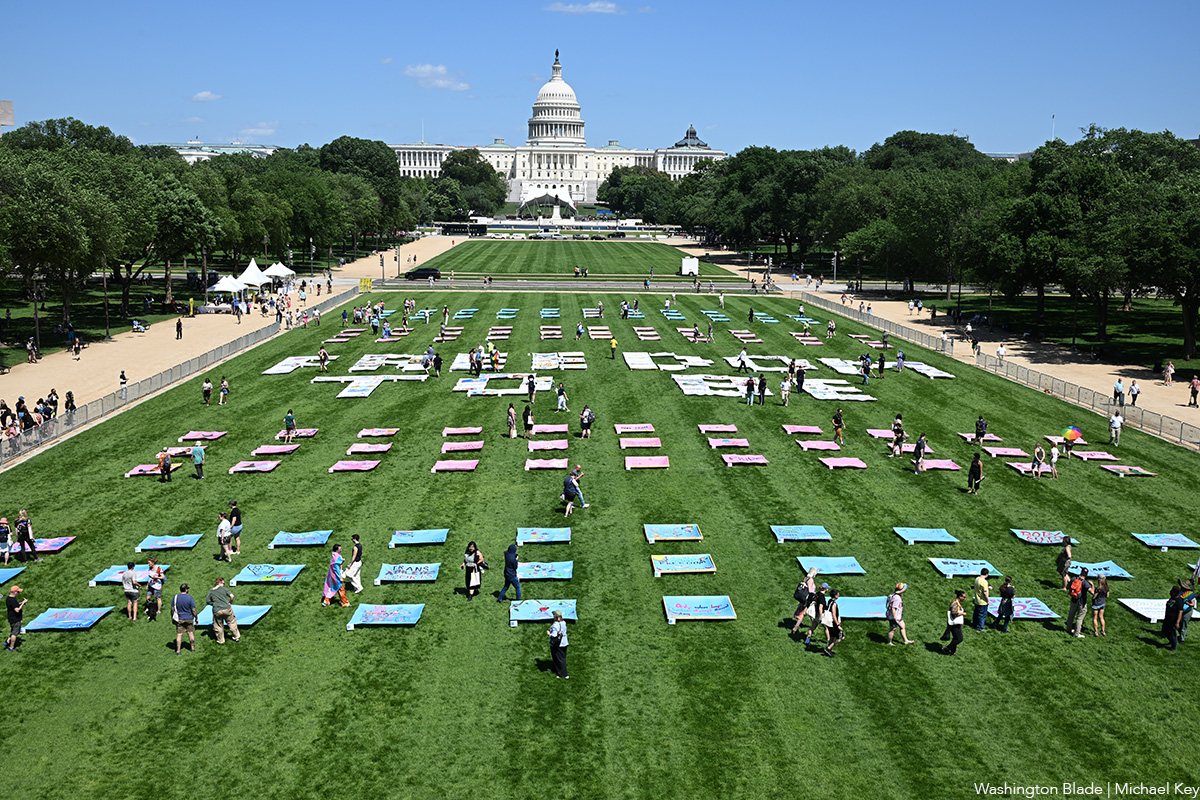
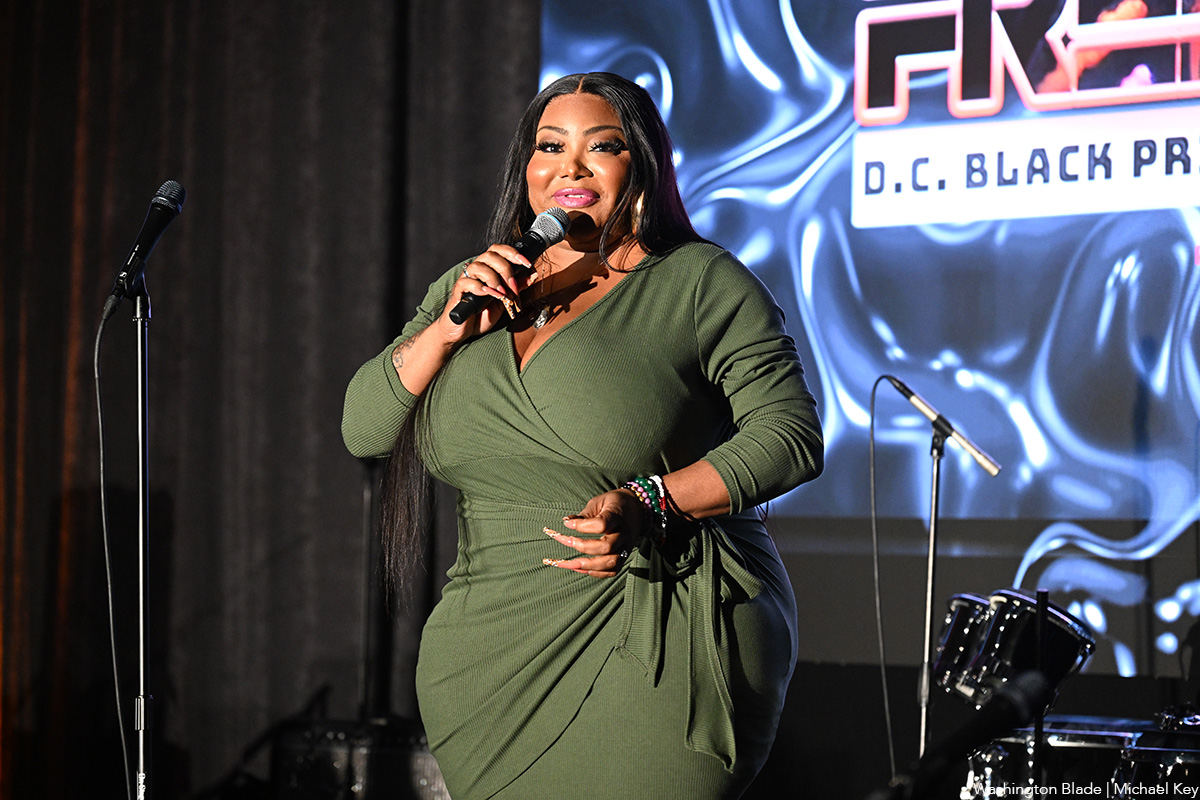
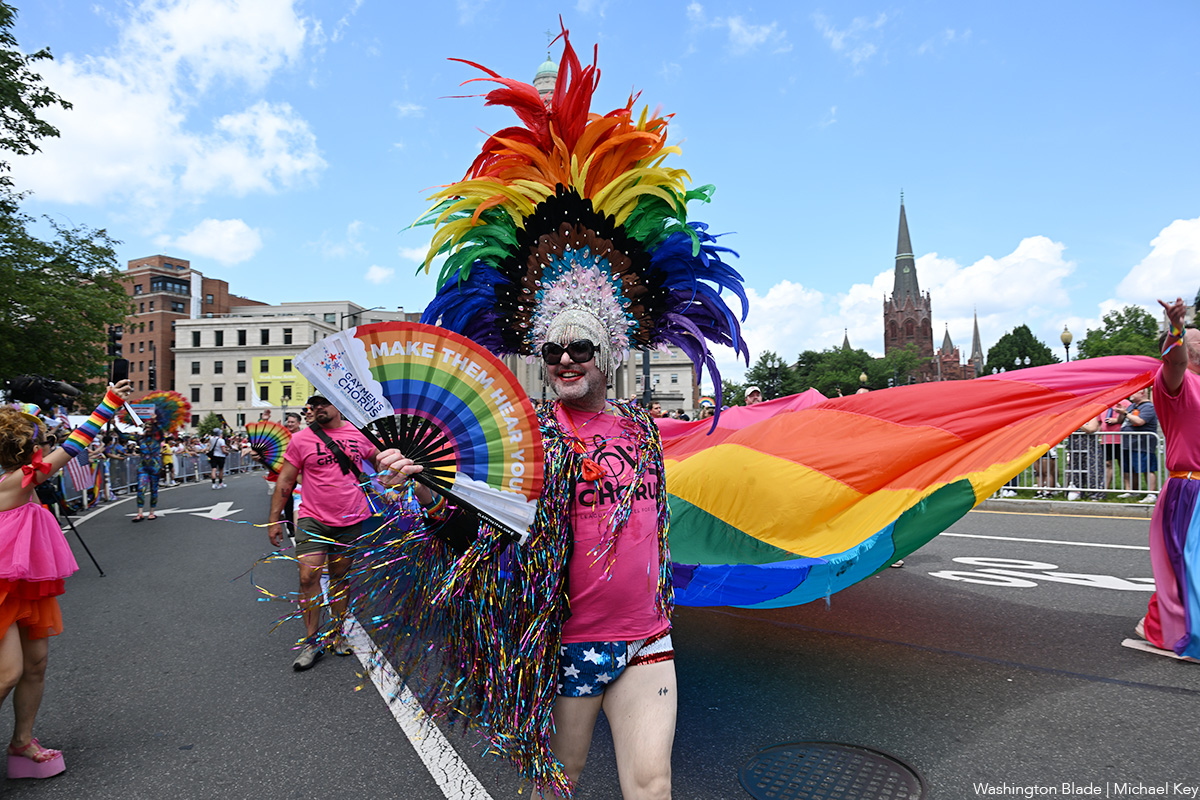
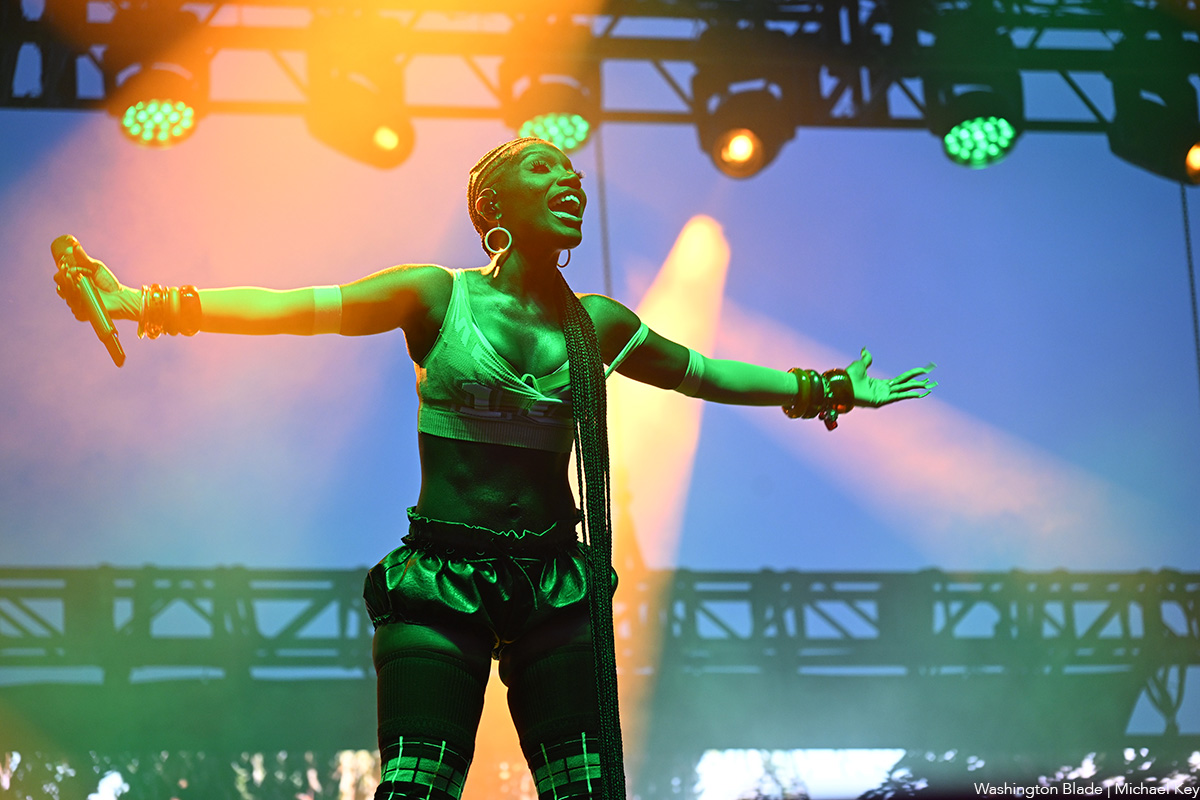
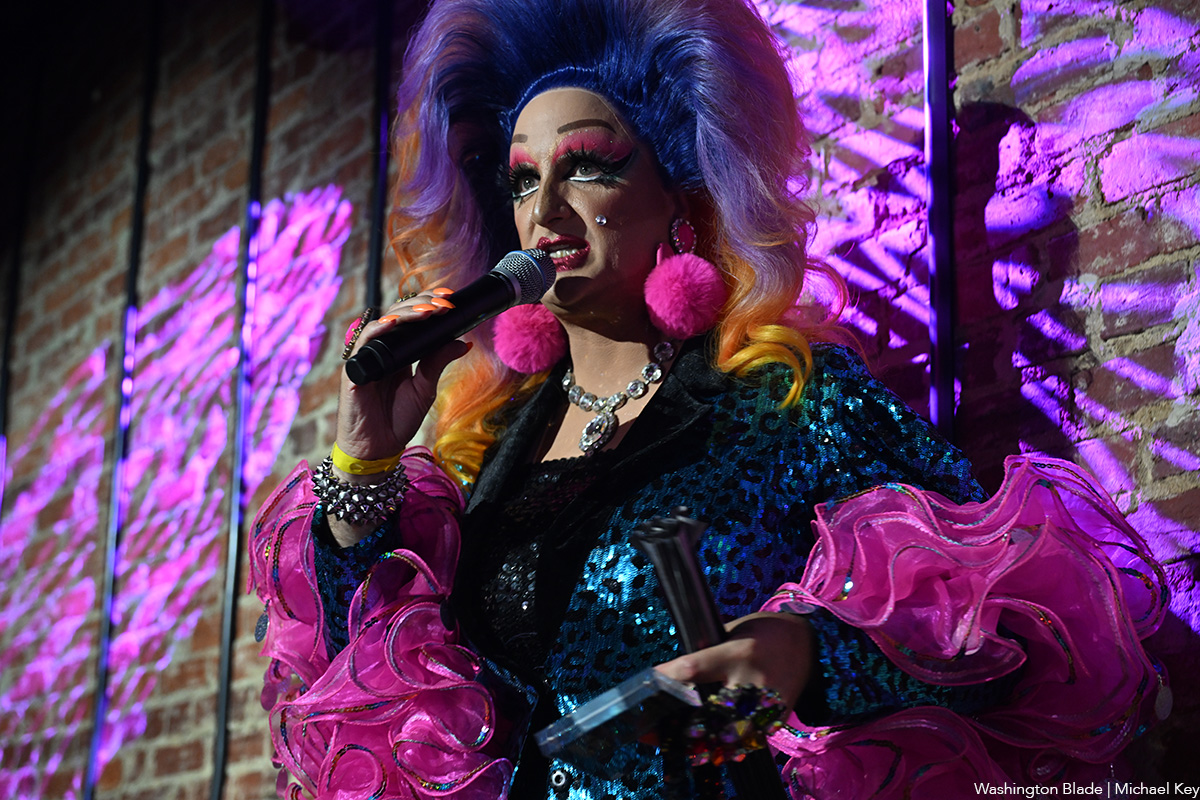
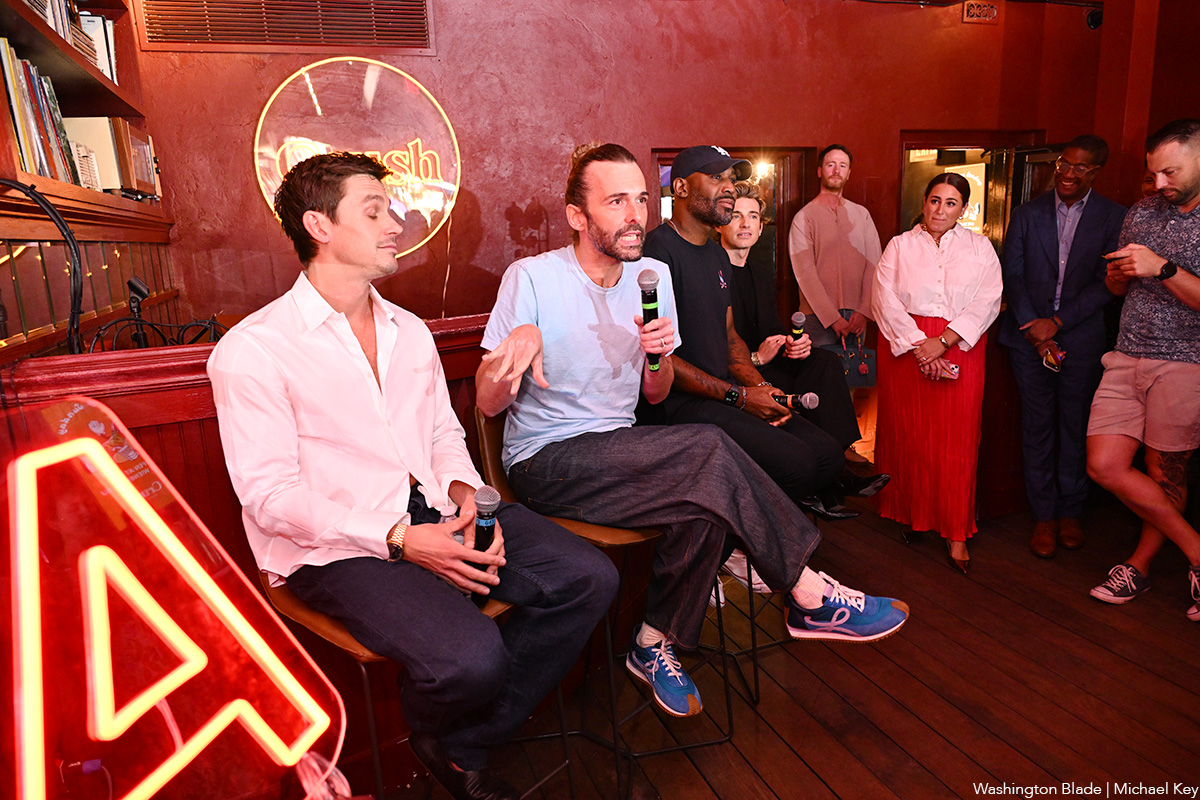

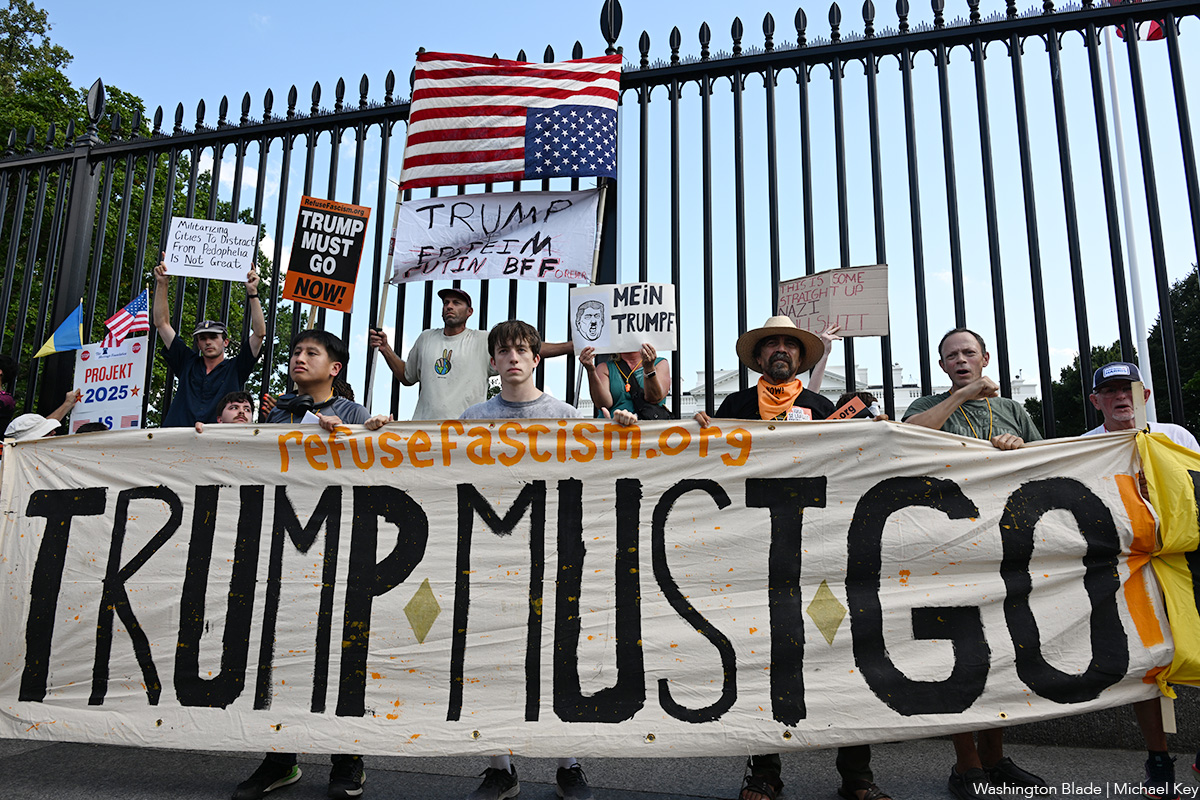
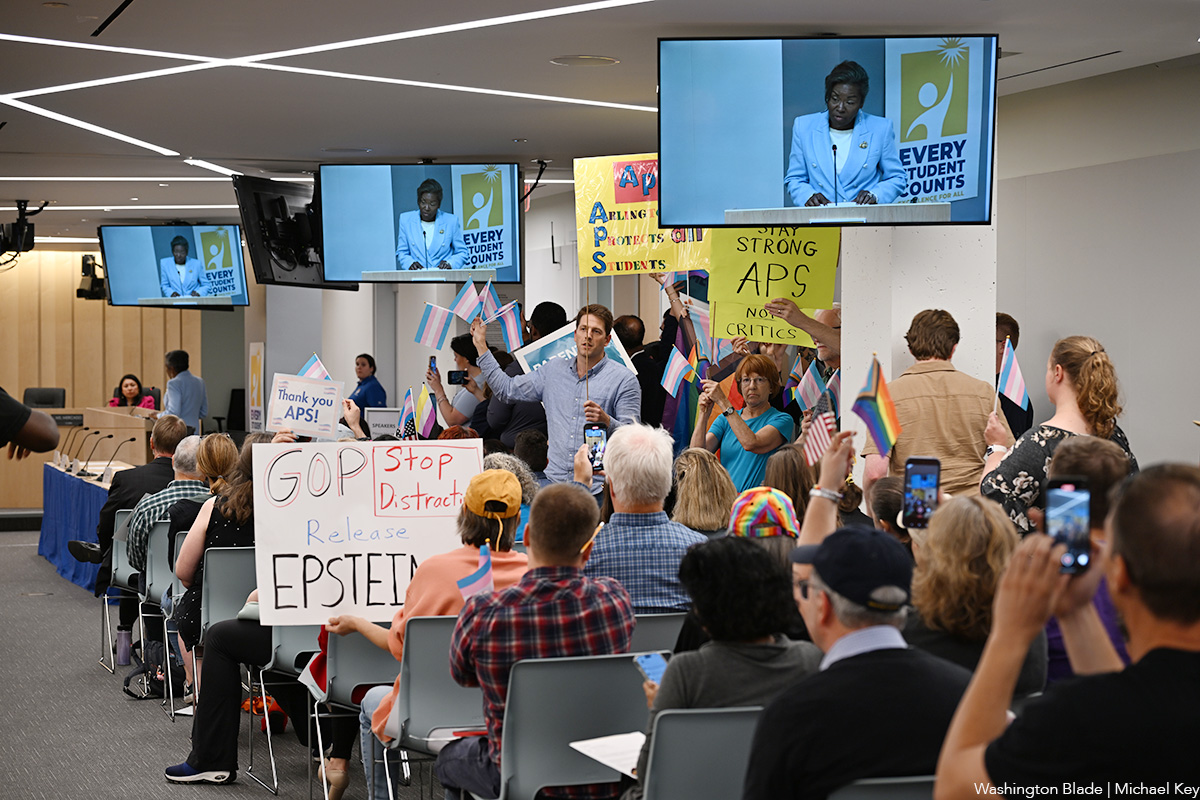
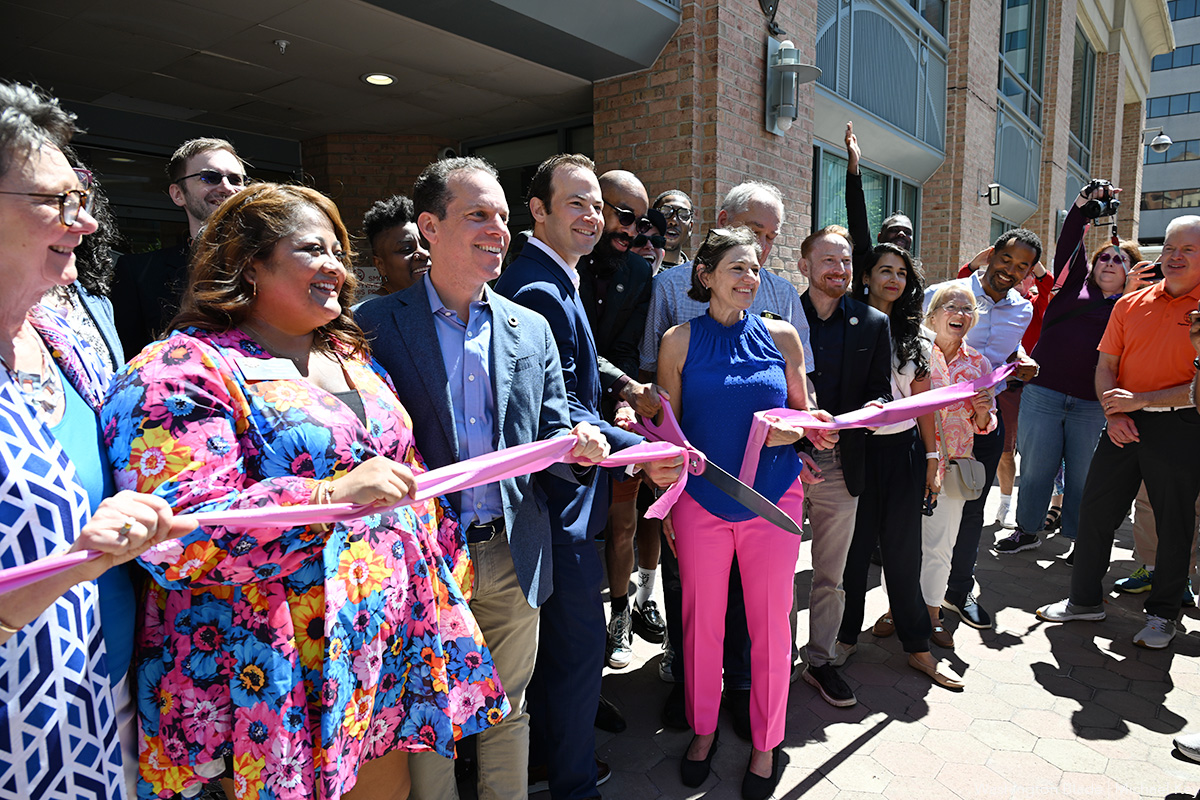
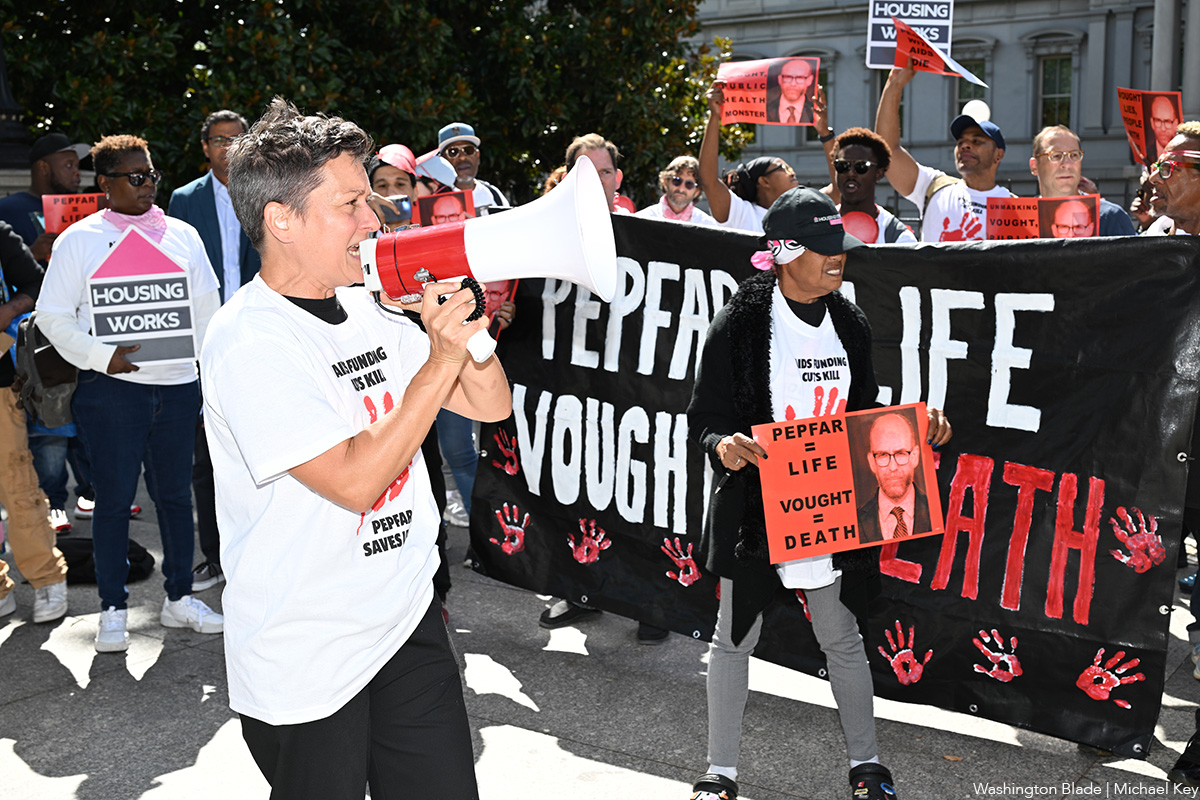
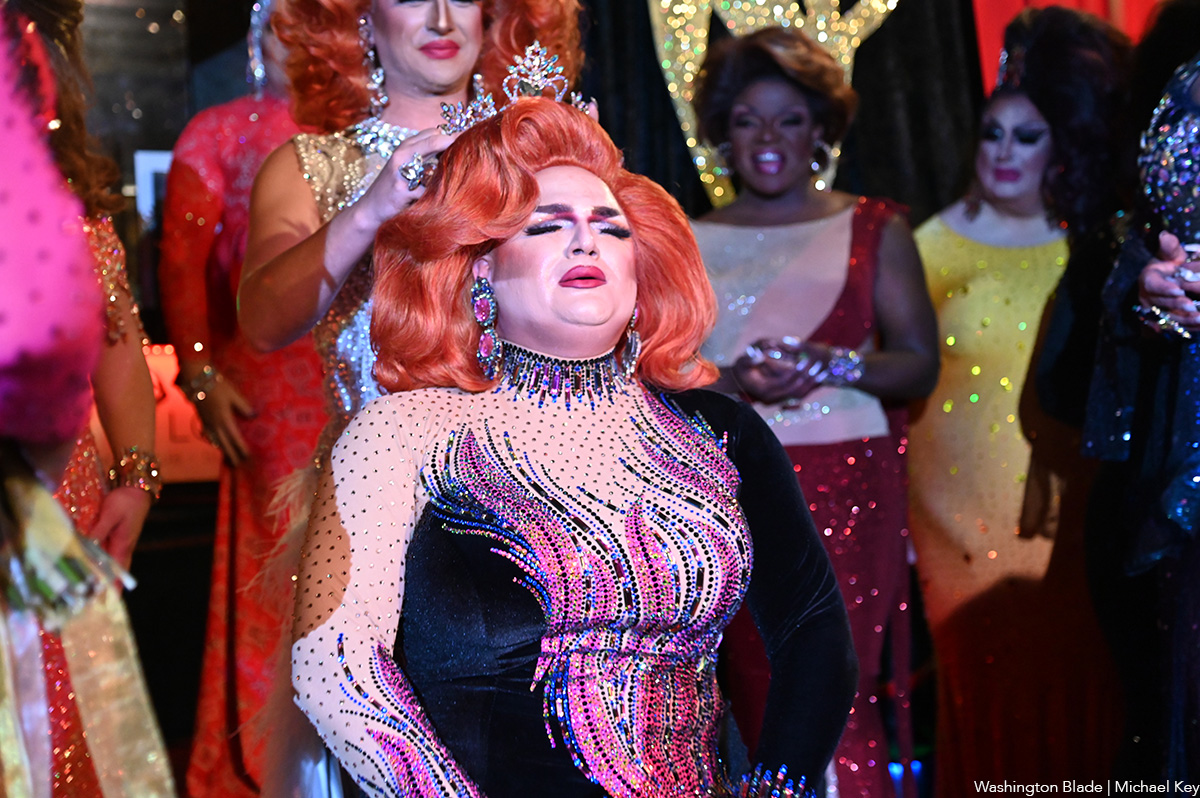

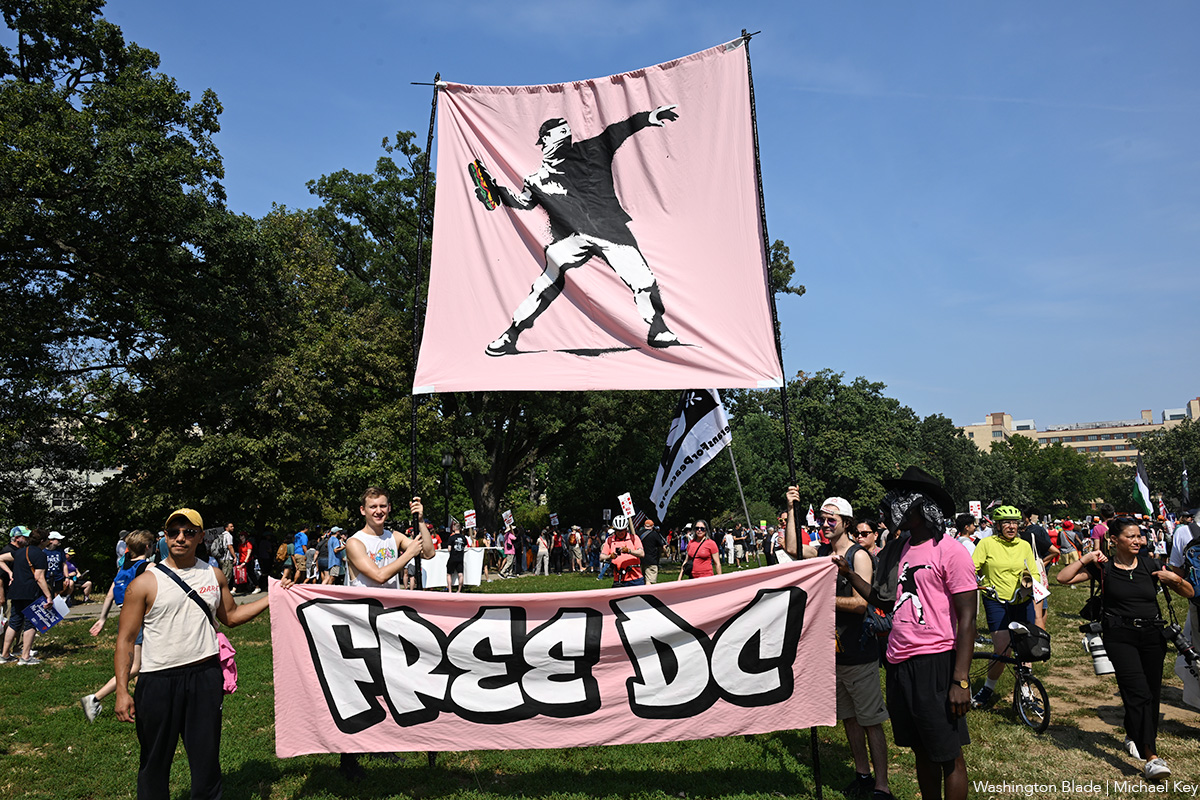
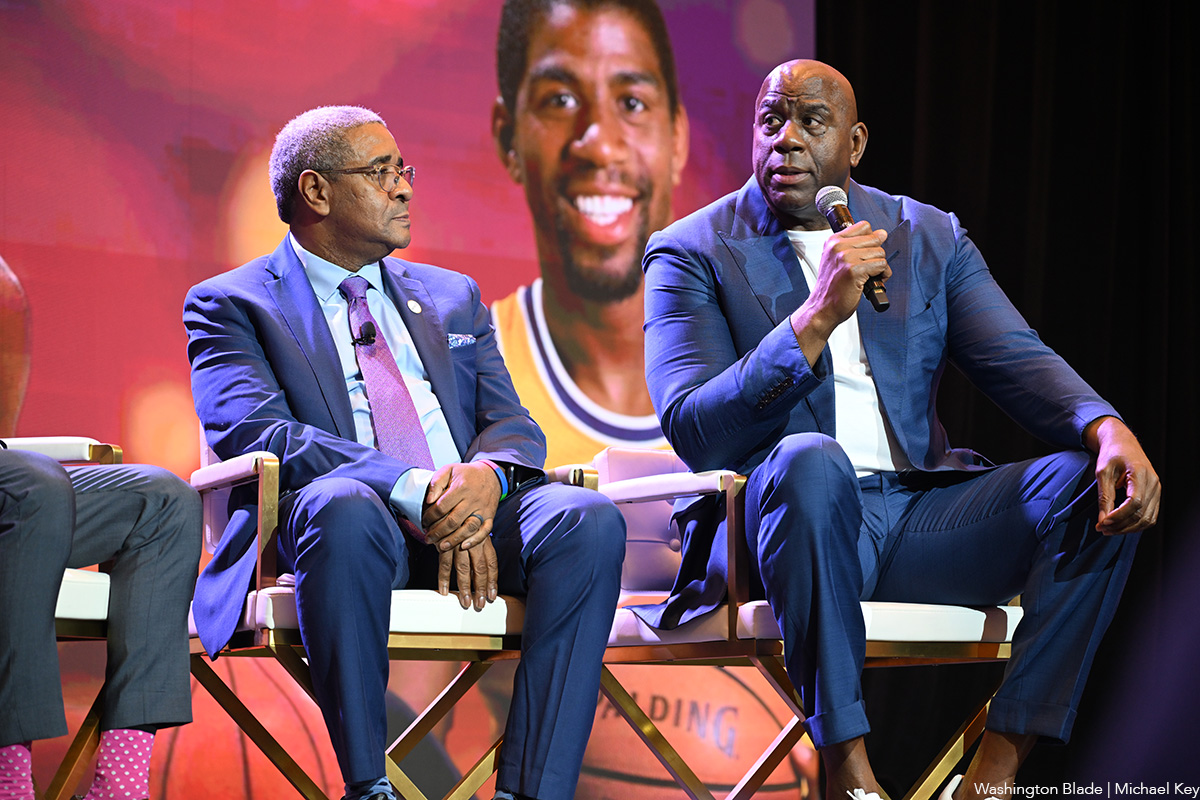
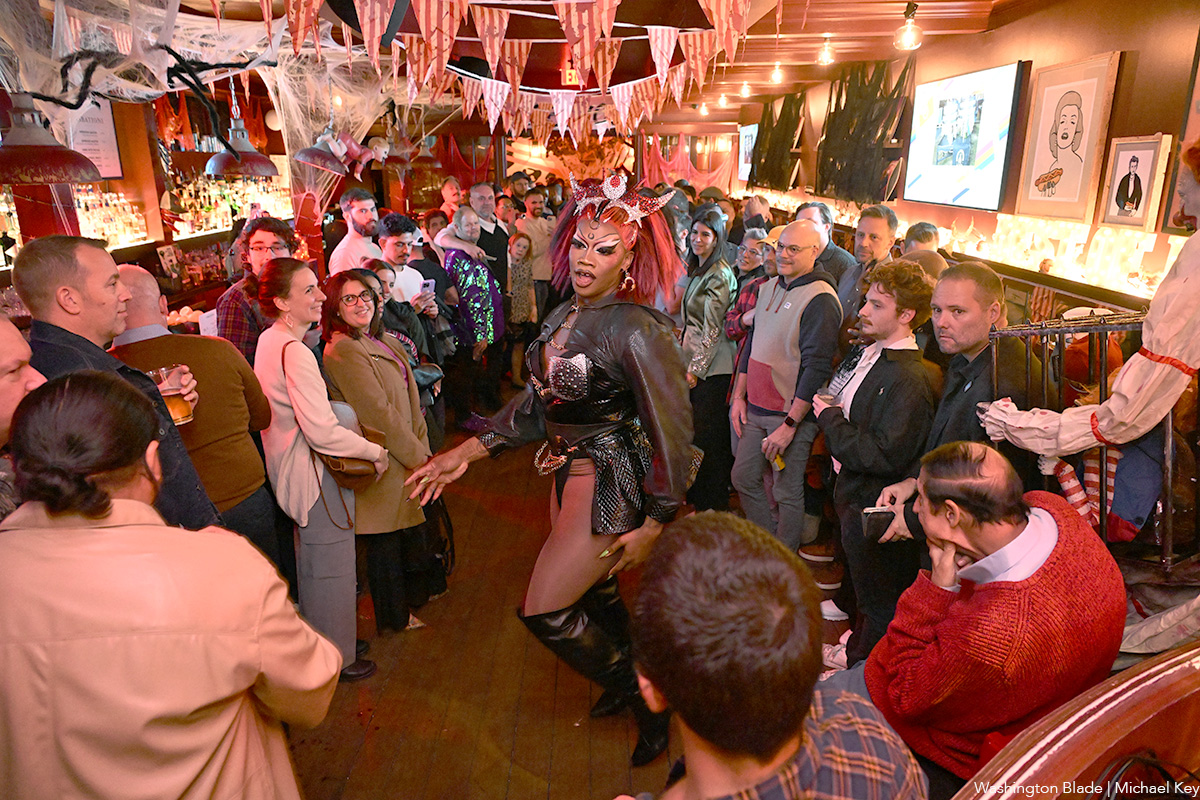
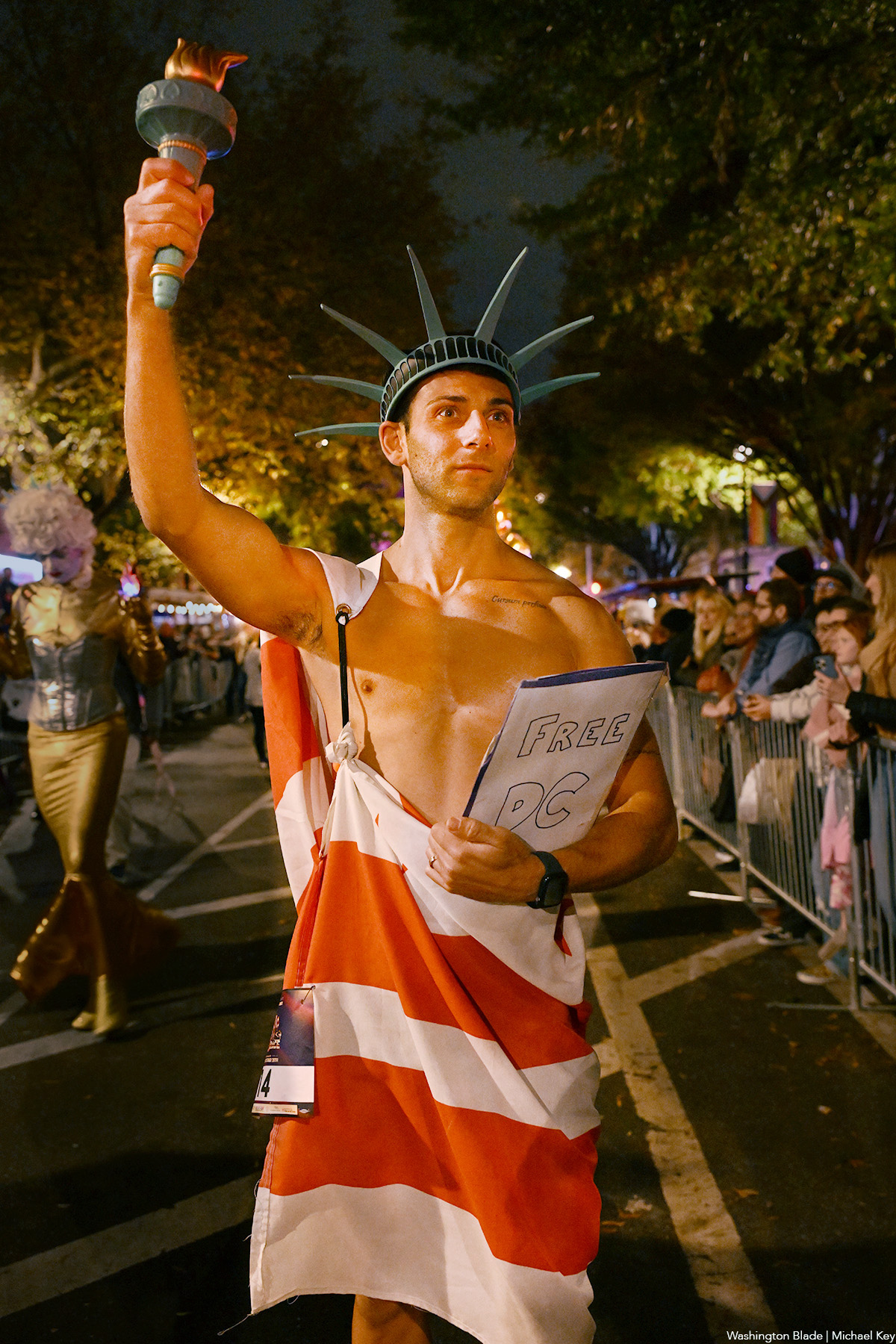
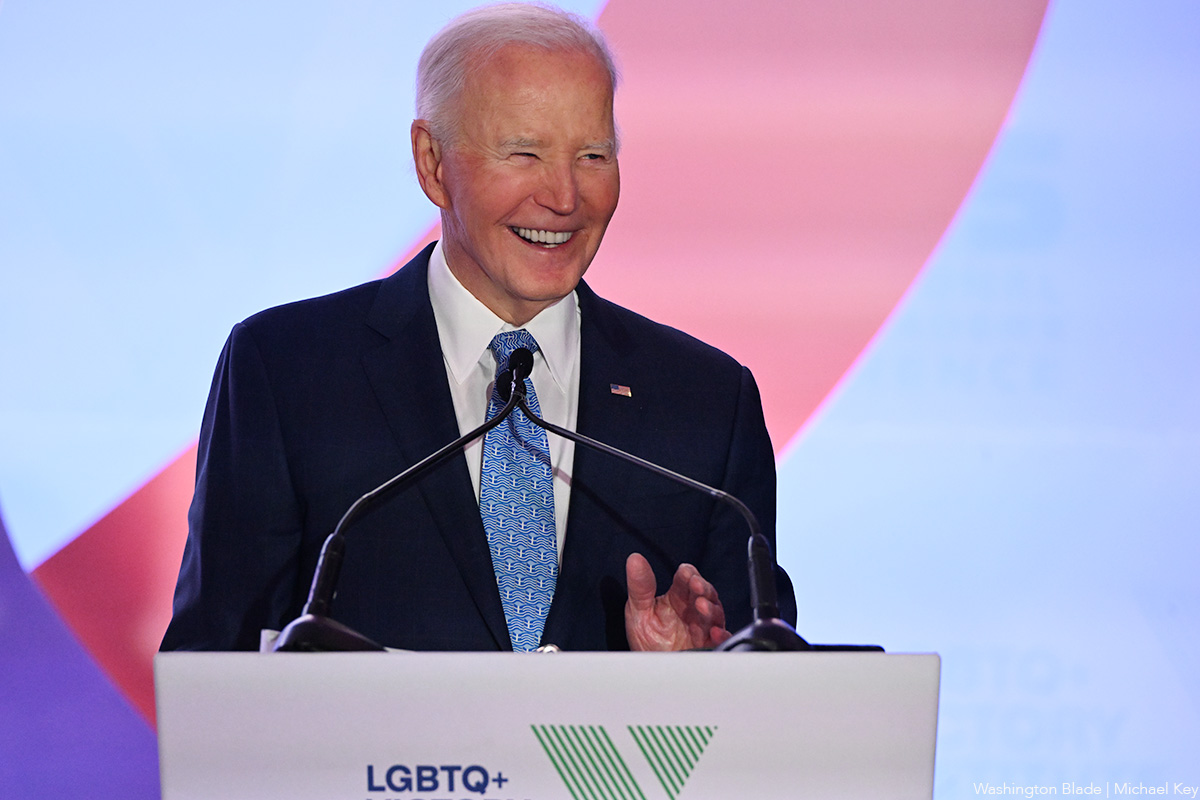
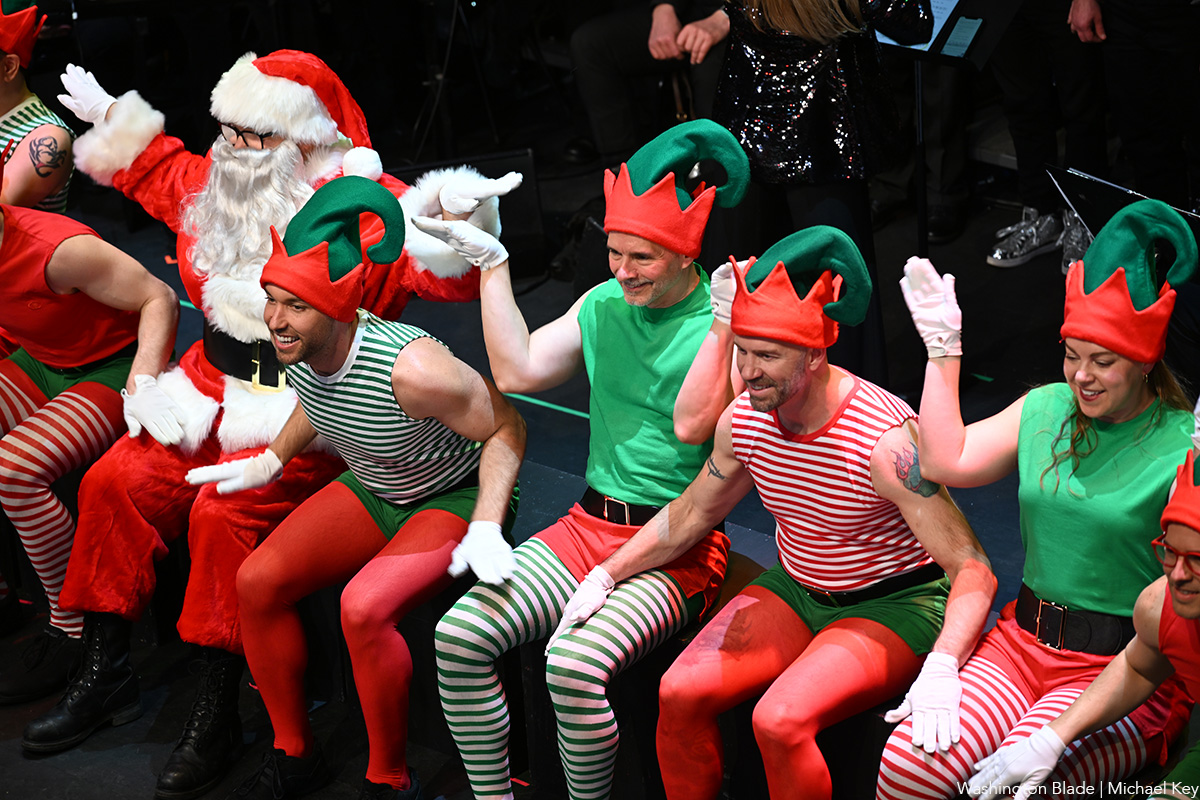
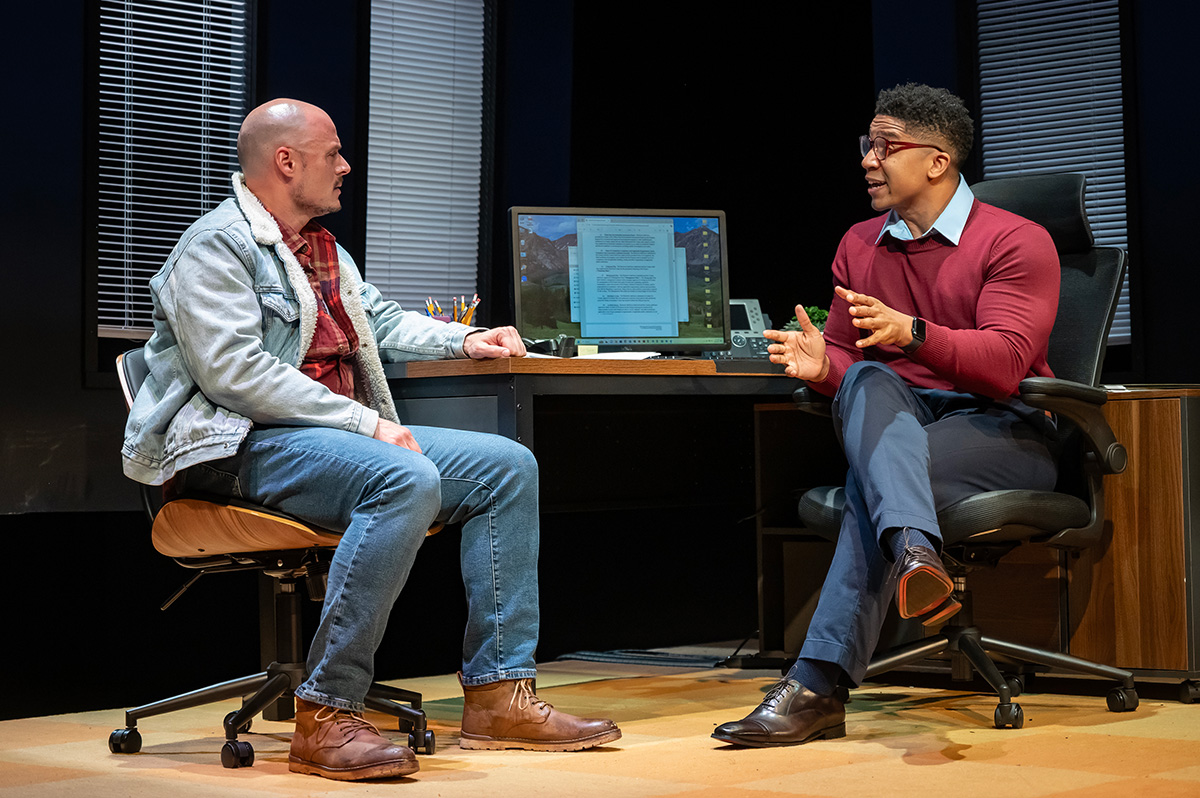
It’s been a year filled with drama and music, re-imaginings and new works. There was a lot on offer in 2025, and much to enjoy. Here are 10 now-closed productions that come to mind.
On Valentine’s Day at Folger Theatre on Capitol Hill, out actor Holly Twyford served as narrator for “The Love Birds” a Folger Consort work that melds medieval music with a world-premiere composition by acclaimed composer Juri Seo and readings from Geoffrey Chaucer’s “A Parlement of Foules”
Standing behind a podium, Twyford beautifully read Chaucer’s words (translated from Middle English and backed by projected slides in the original language), alternating with music played on old and new instruments.
While Mosaic Theater’s “A Case for the Existence of God,” closed in mid-December, it’s proving a production not soon forgotten. Precisely staged by Danilo Gambini, and impressively acted by Lee Orsorio and Jaysen Wright, the soul-searching two hander by out playwright Samuel D. Hunter, tells the story of two men who form an unlikely friendship based on single-fatherhood, a specific sadness, and hope.
The action unfolds in a small office in southern Idaho, where the pair discuss the perplexing terms of a mortgage loan while delving deep into their lives and backgrounds. Nothing is left off the table.
Shakespeare Theatre Company’s spring production of “Uncle Vanya” gave audiences something both fresh yet enduring. Staged by STC’s artistic director Simon Godwin, the production put an impeccably pleasing twist on Russian playwright Anton Chekhov’s classic. It ranks among the very best area productions of the year.
Featuring a topnotch cast led by Hugh Bonneville (TV’s “Downton Abbey”) in the title role, the play was set on an unfinished stage cluttered with costume racks and assorted props, all assembled by crew uniformed in black and actors in street clothes. Throughout the drama tinged with comedy, the actors continued to assist with ever increasingly period set changes accompanied by an underscore of melancholic cello strings. It was innovative and wonderful.
GALA Hispanic Theatre’s production of Manuel Puig’s “Kiss of the Spider Woman” was an intimate and affecting piece of theater. Staged by José Luis Arellano, it starred out actors Rodrigo Pedreira and Martín Ruiz as two very different men whose paths cross as convicts in an Argentine prison.
Arena Stage scored with a re-imagined and updated take on the widely liked musical “Damn Yankees.” Directed by Sergio Trujillo, the Broadway bound production has been “gently re-tooled for its first major revival in the 21st century,” moving the action from the struggling Washington Senators baseball team to the turn-of-the-century Yankees lineup. Ana Villafañe’s charmingly seductive Lola and a chorus of fit ball players made for a good time.
Also at Arena, out playwright Reggie D. White’s new work “Fremont Ave.” was very well received. A semi-autobiographical glimpse into home and the many definitions of that idea specifically relating to three generations of Black men, the work boasts a third act with a deeply queer storyline to boot.
Before his smash hit “Hamilton” transformed Broadway, Lin-Manuel Miranda wrote “In the Heights,” a seminal musical set against the vicissitudes of an upper Manhattan bodega. Infused with hip-hop, rap, and pop ballads, the romance/dramedy takes place over a lively few days in the vibrant, close-knit Latin neighborhood, Washington Heights.
Signature Theatre’s exciting take on “In the Heights” featured a talented cast including out actor Ángel Lozado as the bodega owner who figures prominently in the barrio and the action.
Studio Theatre’s recent production of lesbian playwright Paula Vogel’s newest work “The Mother Play,” a drama with humor, is about a well put together alcoholic mother and her two gay children living under difficult circumstances in the less glitzy parts of suburban Maryland. With nuanced performances and smart direction, the production was terrific.
Keegan Theatre surpassed expectations with its production of “Lizzie” a punk rock opera about Miss Borden, the fabled axe wielding title character. Performed by a super all-female cast, they belted a score that hits hard on subjects like money, queerness, and strained (to say the least) family relationships.
Round House Theatre impressed autumn audiences with “The Inheritance,” a two-part drama sensitively staged by out director Tom Story and acted by a mostly queer cast that included young actor Jordi Bertrán Ramírez in a breakout performance.
Penned by out playwright Matthew López, the epic work inspired by E.M. Forster’s novel “Howards End,” explores themes of love, legacy, and the AIDS crisis through the lives of three generations of gay men in New York City.
Prior to opening, Story commented that with the production’s predominately queer cast you get actors who “really understand the situation, the humor, and the struggle. It works well.” And he was right.


